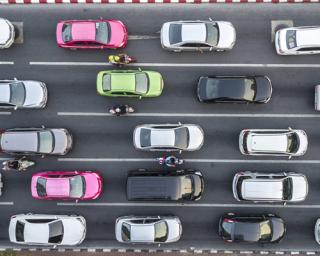California Moves Closer to Banning Gas-Powered Vehicles by 2035
SACRAMENTO, Calif. — California's statewide ban on the sale of new gasoline-powered passenger cars and trucks in 2035 is one step closer to reality.
On Aug. 25, California Air Resources Board (CARB) approved the Advanced Clean Cars II rule that sets California on a path to rapidly growing the zero-emission car, pickup truck and SUV market, and deliver cleaner air and massive reductions in climate-warming pollution.
The rule establishes a year-by-year roadmap so that by 2035, 100 percent of new cars and light trucks sold in California will be zero-emission vehicles (ZEV), including plug-in hybrid electric vehicles (PHEV).
The regulation realizes and codifies the light-duty vehicle goals set out in Gov. Gavin Newsom's executive order established in 2020.
"Once again California is leading the nation and the world with a regulation that sets ambitious but achievable targets for ZEV sales. Rapidly accelerating the number of ZEVs on our roads and highways will deliver substantial emission and pollution reductions to all Californians, especially for those who live near roadways and suffer from persistent air pollution," said CARB Chair Liane Randolph.
"The regulation includes groundbreaking strategies to bring ZEVs to more communities and is supported by the governor's ZEV budget which provides incentives to make ZEVs available to the widest number of economic groups in California, including low- and moderate-income consumers," she added.
The regulation applies to automakers, not dealers, and covers only new vehicle sales. It does not impact existing vehicles on the road today, which will still be legal to own and drive, CARB outlined.
The new rule accelerates requirements that automakers deliver an increasing number of zero-emission light-duty vehicles each year beginning in model year 2026. Sales of new ZEVs and PHEVs will start with 35 percent that year, build to 68 percent in 2030, and reach 100 percent in 2035.
The Advanced Clean Cars II rule also takes regulatory steps to assure that ZEVs can be full replacements to gasoline vehicles:
- By model year 2030, the rules require the vehicle to maintain at least 80 percent of electric range for 10 years or 150,000 miles. This is phased in from 70 percent for 2026 through 2029 model year vehicles.
- By model year 2031, individual vehicle battery packs are warranted to maintain 75 percent of their energy for eight years or 100,000 miles. This is phased in from 70 percent for 2026 through 2030 model years.
- ZEV powertrain components are warranted for at least three years or 50,000 miles.
According to CARB, by 2037, the regulation delivers a 25 percent reduction in smog-causing pollution from light-duty vehicles to meet federal air quality standards.
Additionally, the standard delivers multiple benefits that grow year by year, including:
- By 2030, there will be 2.9 million fewer new gas-powered vehicles sold, rising to 9.5 million fewer conventional vehicles by 2035.
- In 2040, greenhouse gas emissions from cars, pickups and SUVs are cut in half.
- From 2026 through 2040 the regulation cuts climate warming pollution from those vehicles a cumulative total of 395 million metric tons. That is equivalent to avoiding the greenhouse gases produced from the combustion of 915 million barrels of petroleum.
Sacramento-based CARB's mission is to promote and protect public health, welfare and ecological resources through effective reduction of air pollutants while recognizing and considering effects on the economy. CARB is the lead agency for climate change programs and oversees all air pollution control efforts in California to attain and maintain health-based air quality standards.

